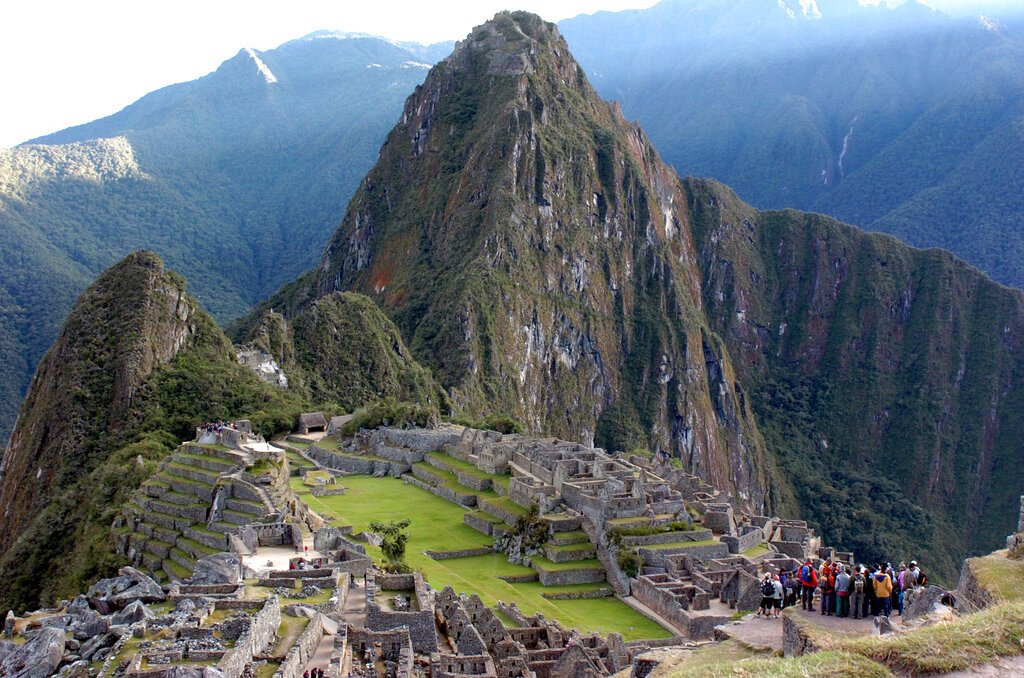 The ruins of Peru’s Machu Picchu, 2007. AP Photo/Karel Navarro
The ruins of Peru’s Machu Picchu, 2007. AP Photo/Karel Navarro
Machu Picchu, the Inca palace tucked away in the mountains of Peru, may be a quarter-century older than previously thought. According to a new study published in Antiquity this month, a team of researchers used advanced radiocarbon dating to determine that the site was in use from 1420 to 1530 C.E.
Using accelerator mass spectrometry (AMS) the team was able to date human remains from Machu Picchu with very little surviving organic matter. Testing 26 individuals found in three cemeteries, they established a date range beginning at least as early as 1420. The latest remains date to around the time of the Spanish invasion in the 1530s. That means the site was in use more than 20 years earlier than was previously believed.
This new discovery challenges the long-held belief that Machu Picchu was built after 1440 (and possibly as late as the 1450s). While Machu Picchu is still believed to have been constructed as a royal estate for Emperor Pachacuti, the new results push back the timeframe of his reign and conquests significantly. Until now, Pachacuti’s rise to power was believed to have occurred in 1438, based on historical documents written by Spanish colonial forces after their invasion in the 16th century, but this new study indicates that Pachacuti’s conquest and subsequent ascension to the throne occurred decades before the long-accepted historical record had accounted for.
Pachacuti, whose name means “reformer of the world” in Quechua, an Indigenous language of the region, was not initially supposed to take the throne. His brother was chosen to rule by their father Viracocha but, after a decisive military victory, he won the favor of the people and rose to power. His conquests expanded the Inca empire from Cuzco to a large region spanning western South America. Pachacuti, in taking control of the city-state, made the Inca one of the most powerful empires on the continent.
In an email to ARTnews, Yale professor Richard Burger, who was the lead author on the study, explained the consequences of Pachacuti’s “winter palace” being older than expected: “There is widespread consensus that Pachacuti was responsible for the first wave of conquests that formed the core of the Inca empire, so establishing that they begun at least two decades earlier than previously thought is a significant find.”
Burger notes that our understanding of the Inca empire has been based on contradictory historical accounts. “Machu Picchu is among the most famous archaeological sites in the world,” he said in a statement. Yet, “this is the first study based on scientific evidence to provide an estimate for the founding of Machu Picchu and the length of its occupation.” He believes it’s time to reconsider our reliance on accounts written by invading forces, explaining, “Modern radiocarbon methods provide a better foundation for understanding Inca chronology than [colonial] records.” Since 1945, scholars have relied primarily on an “absolute chronology” of the Inca period, based on historical records, by American archaeologist John Rowe.
Meaning “old mountain” in Quechua, Machu Picchu was built and inhabited by the Incas, and remained hidden from the rest of the world for centuries. Steep mountain slopes provide a natural inaccessibility to the site, with access only possible from one side, accompanied by a dry moat that was used to make the palace virtually impenetrable. Despite these fortifications, Machu Picchu was abandoned by the Incas around the time the Spanish began their conquests.
In its original design, Machu Picchu would have been a place “where the royal family and their guests could escape the pressures of the capital in Cuzco and engage in recreational activities such as banqueting, hunting, and gambling, as well as religious activities associated with the royal family,” write the researchers. Of the few hundred people who lived at Machu Picchu year-round, the majority would have been retainers—specialized craftsmen, artisans, or laborers who were taken from their homelands to serve the empire. Assigned to the royal estate, they would have made the site, according to the researchers, “ethnically diverse and cosmopolitan, and fundamentally different from the agricultural villages in the Cuzco heartland.”
It’s these individuals who were buried at Machu Picchu, along with grave goods such as ceramics, bronze, and silver shawl pins, tweezers, and family heirlooms. Burials were placed under boulders, beneath cliff overhangs, and in shallow caves, and were sealed with clay plaster and rocks. The bone and tooth samples show that they came from a variety of regions, including the north coast, central coast, central highlands, Cuzco, and the Lake Titicaca area.
Machu Picchu comprises about 200 structures, with temples in the upper region and warehouses in the lower region, and separate areas for residences and agricultural production. Famous monuments include the Temple of the Sun, the Intihuatana stone—an astronomical clock based on the winter solstice—and Inti Mach’ay, a cave used for rites of passage. In 1983, Machu Picchu was designated a UNESCO World Heritage Site and attracts millions of visitors each year.
Source link : https://www.artnews.com/art-news/news/machu-picchu-chronology-study-1234600871












